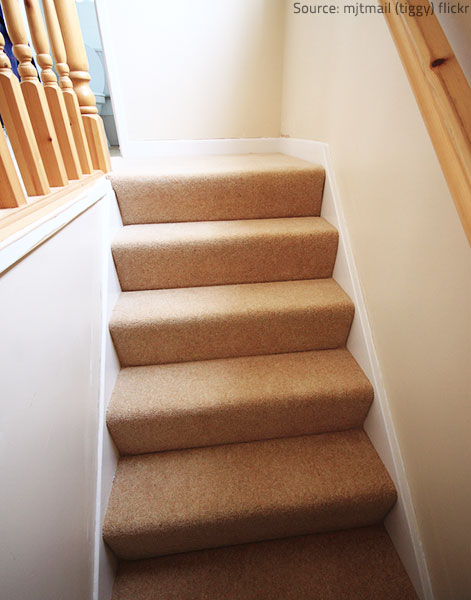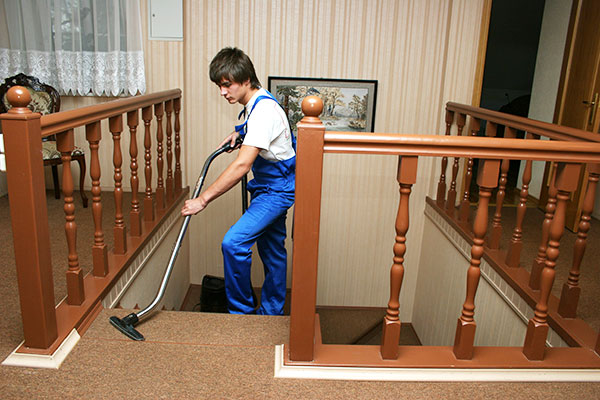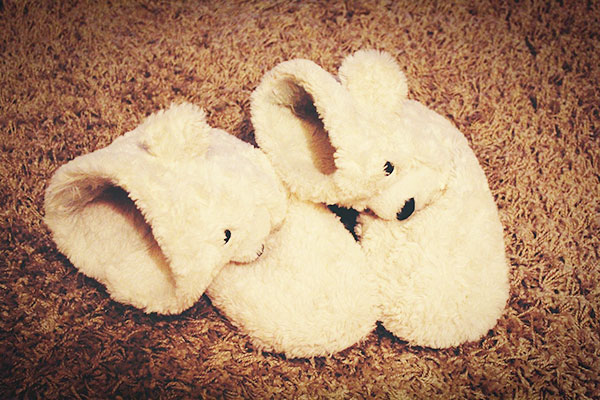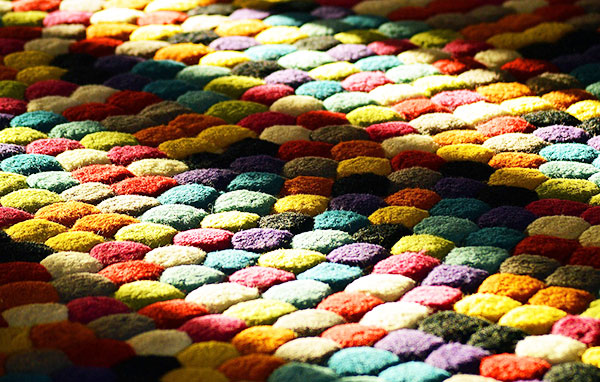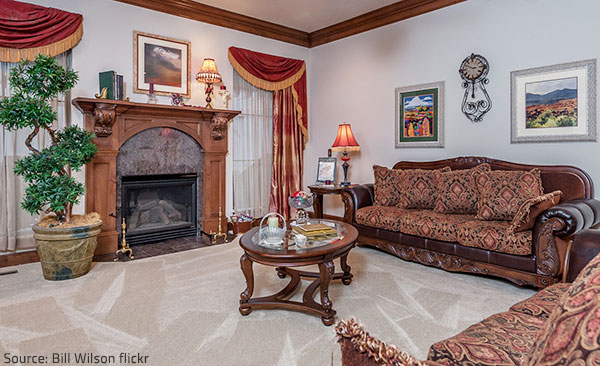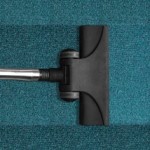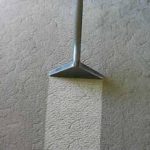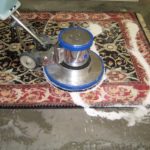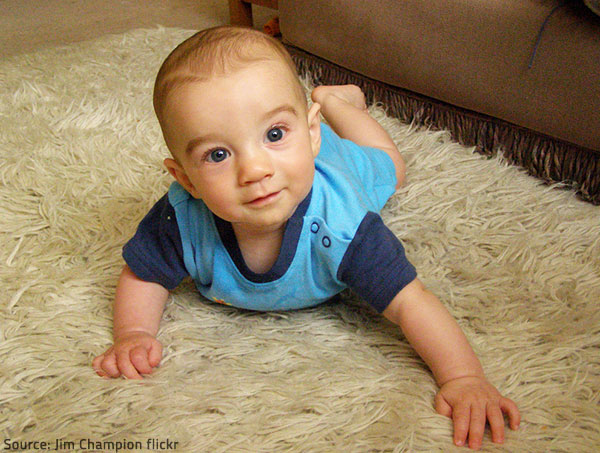
Do you want to ensure the comfort and safety of your kids when they play on the floor at home? Do you want to enhance the peace and quiet of your bedroom? Do you want to give your surroundings a warm and cozy feel? Achieving this is easier than you may think – all you need to do is choose good carpeting for your home and have it properly installed. The right carpet will provide a comfortable and relaxed atmosphere in the room, insulate the floor, absorb excessive noise, increase yours and your family’s safety (by preventing slips and falls and protecting dropped objects from being damaged), and enhance the beauty and appeal of your property.
Choosing the best carpet for your home, however, may be quite a challenge. With so many different styles, colors, and materials available, it’s easy to make a mistake and select a carpet that is not appropriate for your lifestyle, your needs, or your overall interior décor. To avoid such undesired instances and make sure your investment will be a good one, you need to keep several important factors in mind when making your pick.
Factors to Consider When Choosing Carpet
The right carpet for your home is the one that suits your needs, matches your taste, and fits your budget.
So, what type of carpet will work best in your home? It depends on where you intend to put it, for how long you’re planning to use it, and how much you’re willing to spend on it.
1) Location
A different type of carpet will be suitable for every different room in your home:
- Bedrooms and guest rooms – A bedroom doesn’t see a lot of traffic, so the carpet you put in your sleep sanctuary doesn’t have to be particularly durable or stain-resistant. On the other hand, you’ll probably often sit on the floor or walk barefoot on the bedroom carpeting, so it needs to be as soft and warm as possible. Besides, you’ll certainly want it to look cozy and beautiful and to absorb sounds well, so that you can enjoy peace and quiet in your bedroom. This makes plush textures and sponge paddings your best choice for a bedroom carpet (See below for more details). Depending on your available budget, you can go with less expensive options, such as polyester or advanced-generation nylon, or opt for luxurious fibers, such as wool or wool blends. Both alternatives will perform great in a bedroom;
- Dining rooms – The carpet you choose for your dining room needs to have good stain protection and firm “rebond” padding. This makes textured carpeting the number one choice for a dining room. As far as fibers are concerned, advanced-generation nylon is your best bet;
- Halls and family rooms – You need carpeting with a highly durable construction and firm padding in such high-traffic areas. Opt for a low, densely packed cut pile or a level-loop carpet (such as a Berber-style carpet). Frieze-style carpeting is also a great choice due to its tightly twisted tufts that can stand up to wear and tear very well. When it comes to fibers, you should pick either nylon or polypropylene (olefin);

Putting a quality carpet on the stairs will not only add charm and coziness to your home decor, but will also reduce the risk of slipping and falling down the stairs. - Stairs – When choosing carpeting for stairs, you need to keep in mind that it will get a lot of wear and will have to bend over each step. Therefore, you’re advised to opt for strong fibers (such as olefin) and a cut pile (a looped pile carpet will open up over the areas where it curls over the stairs, showing the carpet backing). If you can afford it, pick a woven wool carpet for your stairs – woolen carpets are extremely durable and their woven backing helps keep each piece of yarn in place, which is especially important for stairs.
Needless to say, if you have pets and/or children, you need to get carpeting with higher soil- and stain-resistance, and opt for colors and textures that hide dirt and stains (the same properties are also recommendable for carpeted areas that are adjacent to outside doors, as well as for stairs and heavily used rooms).
Even though you need different types of carpet for the different areas in your home, you can still achieve a uniform look and feel throughout your property. One carpet style is often sold in varying weights and qualities, so you can install the same color and pattern everywhere in the home – in different weights depending on the amount of traffic the specific area receives:
- Put the heaviest carpets (highest quality) on the stairs and in the family room;
- The medium quality carpets should be placed in the hallways, living and dining rooms;
- The lightest carpets go in the bedrooms.
The floor covering will look the same, but every room will get the right carpet. This will allow you to save some money while keeping a sense of clear transition and flow between one space and the next.
2) Intended period of use
High quality carpets look great, feel great, and perform great. They make a valuable investment, as they add luxury and comfort to the home and last for many years of daily use. Yet, they cost a lot. So, if you’re planning to move or refurnish a particular room any time soon, it may not be a good idea to spend a lot of money on high quality carpeting (you won’t be able to take it to your new home or preserve its good condition when renovating the room). Opt for inexpensive carpets instead or consider area rugs rather than carpeting because they are portable and can be easily moved to your new place or stored away during a renovation project.
3) Maintenance requirements
The extent of maintenance required to keep a carpet in good condition is another important factor in the carpet selection process. Natural fibers and plush textures may look gorgeous but require much greater care than simpler types of carpet. So, before deciding on a carpet for your home, make sure you understand its maintenance requirements – find out how often you’ll have to clean it and what special equipment or products may be required. Pick the type of carpet that is most appropriate for your lifestyle:
- Avoid hard-to-clean, high-end carpets if you have young children and/or pets or if you don’t have enough time to dedicate on carpet care;
- Opt for stain-resistant materials to make cleaning easier and ensure the good looks of your carpet for a longer period of time;
- Pick textured carpets to conceal dirt, footprints, and vacuum cleaner tracks;
- Look for textured, level loop, or high-density loop carpets as they are easier to clean and stand up well to wear and tear;

Having your carpet professionally cleaned at least once a year will help enhance its look and prolong its life. - Do not install cut pile and multilevel loop carpets in high-traffic areas, as these types of carpet tend to trap dirt and wear quickly.
Even if you choose a carpet that is very easy to maintain, it will still need proper care and regular cleaning. In order to preserve its excellent condition for a long time, it is highly recommended to have your carpet professionally cleaned at least once a year – the experts will not only remove any dirt, dust, and stains from the carpet (however persistent they may be), but will also refresh and revitalize it, enhancing its look and prolonging its life.
Needless to say, if you have selected more luxurious carpeting, professional carpet cleaning should become an integral part of its maintenance schedule.
4) Cost
More often than not, the cost is the decisive factor when making a purchase. Carpet prices vary greatly – from $2 to $12 per square foot depending on the material, design, brand name, and other properties of the carpet. The cost is directly related to the quality of the carpet, of course, but once you get above a certain amount per square foot, it is the style that dictates the higher price rather than the quality.
When calculating your carpet costs, do not forget that in addition to the basic carpet price, you’ll be charged for padding, installation, and other labor as well. So, when shopping around for a new carpet, make sure you request separate pricing for materials and installation to be able to make an accurate comparison among different offers. Get at least three separate estimates (make sure they include the charges for removal of old flooring materials, delivery, padding, installation, and any other special requirements that you may have) and choose the highest quality services at the most reasonable price. Make sure you hire experienced and trustworthy professionals to work with – otherwise, you risk poor installation (which will inevitably result in serious carpet problems within a couple of years) or overcharging (the square footage of the areas that are to be carpeted may be “overmeasured”, so that you pay for carpet and padding you won’t actually use; you may be given an exorbitant overall price if you fail to ask a price quote for each individual aspect of the job; you may be tricked into paying plenty of money for a stylish carpet that is made with lower quality fibers; etc.)
Good to know: There are certain tricks that will help you cut down the final cost:
- Choose the right carpet for each room, as already discussed above (durable, stain-resistant materials for your family room, more affordable low-traffic carpeting for your guest rooms, etc.);
- Consider maintenance expenses and replacement costs. Opt for carpets that do not require any special maintenance equipment or materials, use carpet tiles instead of rolled carpeting (so that you can replace single tiles when they get soiled or stained, not the entire carpet), etc.;
- Complete some of the carpet installation tasks by yourself – take your furniture out of the room, remove the old flooring materials, etc.
Now that you are aware of all the relevant factors, you can make your final choice.
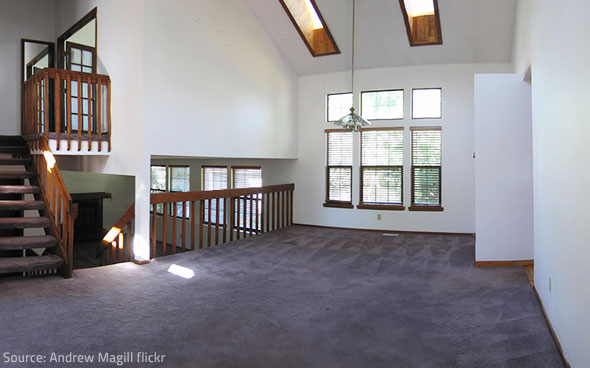
How to Choose the Right Carpet for Your Home
So, how to pick a good carpet? Here is what you need to do:
1) Select the perfect padding
Made predominantly from rubber or foam, carpet padding supports your wall-to-wall covering and prevents carpet fibers from coming apart over time. It also helps even out the floor, acts as insulation, absorbs noise, prevents the carpet from shifting, and makes it feel softer and more luxurious. So, picking an adequate padding material is of paramount importance for the final success of your carpeting project:
- Rebonded polyurethane foam, also known as “rebond,” is made from fragments of urethane foam that are bonded together to create a heavy padding suitable for high-traffic areas;
- Fiber padding is also commonly recommended for high-traffic areas. It feels very firm and absorbs part of the impact of foot traffic. Fiber padding is made from jute, animal hair, or a combination of jute and synthetic fibers;
- Sponge rubber padding feels very soft and bouncy. It works best in areas that don’t see too much traffic, such as bedrooms and guest rooms;
- Prime urethane foam padding is appropriate only for low-traffic areas.
As a rule of thumb, carpeting in high-traffic areas requires firm, dense padding, while light-traffic floor coverings need less protection. However, it’s very important to match the padding to the type of carpet you’re going to use – for cut pile or cut loop carpeting you’re recommended to use a 7/16-inch padding with 6 pounds of density per cubic feet; for thin loop carpeting, you can use a 3/8-inch pad with 8 pounds of density per cubic foot.
2) Select the perfect fibers
It is the type of fibers you choose that will determine the performance of your new carpet:
- Wool is the only natural fiber used in wall to wall carpeting nowadays, but it is the look and feel of wool that sets the standard against which other fibers are judged. Wool is soft and luxurious – it feels great to the touch, comes in a wide variety of styles and colors, and resists crushing or flattening even when subject to extensive use. What’s more, it is hypo-allergenic and very easy to clean. Wool carpets, however, come at a high price as the wool used for carpet fibers is scarce and very expensive (it comes from a special breed of sheep). Therefore, wool is often blended with other fibers, such as nylon or acrylic, to achieve the characteristics of a wool carpet at a lower cost. If you’re considering a wool carpet, have in mind that it stains easily and must be made in heavier weights as compared to the synthetic fibers in order to wear as well as they do.

The variety of carpet styles, designs, materials, and colors available is simply breathtaking! - Nylon outperforms all other fibers in terms of durability, resilience, and ease of maintenance. It is an excellent choice for high- traffic areas and homes with kids and pets. Nylon is stain-resistant, comes in a wide range of colors and styles, wears well, and cleans easily. Besides, it is very resilient (the fibers “bounce back” when you walk on it) and has excellent antistatic qualities. Nylon carpets can last a decade or longer, when properly taken care of. They can be used anywhere in the home and come at a lower cost. This makes nylon the most popular carpet fiber nowadays. Even though it cannot compare to the luxurious quality of wool, the most recent versions – “advanced-generation nylon” – are no longer shiny (one of nylon’s greatest disadvantages) and feel soft and smooth to the touch.
- Polyester has a soft, luxurious feel. It is stain resistant, doesn’t accumulate static electricity, and has rich, vibrant colors. However, this type of synthetic fiber is not as durable and resilient as nylon, so it is only used for dense carpeting in low-traffic areas. Generally, polyester carpets are considered your cheapest and greenest carpeting option (most of the polyester used in carpeting is made from recycled bottles).
- Polypropylene, also known as Olefin, is an attractive, inexpensive fiber that’s very strong and resistant to static, soil, and stains. It is easily cleaned, notably colorfast, and does not absorb moisture, which makes it ideal for both indoor and outdoor applications. Therefore, Olefin carpeting is often made into a looped Berber and used in high-traffic areas such as family rooms, patios, and game rooms. Polypropylene crushes and flattens easily, but due to its various advantages and low prices, it has become one of the most widely preferred carpeting materials among contemporary homeowners.
- Triexta is a newly classified fiber partially made from recycled materials. It is very soft and has excellent anti-stain properties which make triexta carpeting an excellent choice for homes with young kids or pets. It is available in a wide array of colors and styles. Even though triexta is, in fact, a type of polyester, it is less shiny than most other polyesters and doesn’t flatten as easily as they do. However, it is also a bit more expensive than other types of polyester and should be vacuumed much more often.
Acrylic and various blends of synthetic and natural fibers (wool/nylon, acrylic/olefin, nylon/olefin, etc.) are also commonly used in carpeting.
No matter what fiber is used in carpeting, it must be processed into strands and twisted into yarn. The tufts of yarn can be folded over into loops, cut straight across, or both. The density of the pile (the number of tufts per unit of surface area and the thickness of individual tufts) can also vary greatly from one type of carpet to another. Generally, a denser pile means a better carpet.
3) Select the perfect pile texture
Carpets come in a wide variety of textures and styles, each of which has its distinctive look and specific characteristics:
-

Are you looking for a warm, cozy feel in your carpeted room or for a more elegant, formal setting? Plush – Plush carpeting has a soft, luxurious look and feel. It is made from slightly twisted pile, with the tops of the loops cut off. This makes plush carpeting thick and fluffy, but some areas of the carpet may appear shaded because the normal direction of the fibers has been reversed (the bent yarn tufts reflect light in different directions). Regular vacuuming minimizes shading as it helps bend all the tufts in the same direction. Have in mind though that plush tends to show dirt and footprints, so it is only appropriate for low-traffic areas like guest rooms and bedrooms.
- Saxony – Saxony is the most common type of carpeting. It is similar to plush but the yarn is more tightly twisted. As a result, individual yarn tufts become more resilient and acquire an attractive shine. Saxony is more durable than plush and less likely to appear shaded.
- Berber – Berber carpeting consists of continuous fiber loops. It is flat and dense, which makes it extremely durable and resistant to soil and stains. Therefore, Berber is perfect for high-traffic areas and homes with kids and pets.
- Frieze – Frieze is a cut pile carpet style in which the yarn is so tightly twisted that the ends bend over, creating a nubby appearance. Frieze carpeting wears well, feels soft on the feet, and doesn’t show footprints and dirt. It looks less luxurious than plush, but fancier than Berber.
- Textured – Textured carpeting is made from fibers cut to different heights. This causes the fibers to reflect light in different directions which makes vacuum tracks, footprints, and dirt difficult to see. Therefore, textured carpeting is very appropriate for high-traffic areas.
Different textures affect the feel, appearance, and performance of a carpet. Level loop carpets (the loops are of uniform height) have the most durable texture, while multilevel loop (the loops vary in height) conceal dirt better than other types of carpet. Shorter pile carpets are easier to maintain but longer pile carpets look cozier and more luxurious.
4) Select the perfect colors
Carpet colors should complement your interior decor, suit your lifestyle, and contribute to the mood you want to set in a certain room. You can opt for a neutral shade that blends in with fabrics and other surfaces or choose a bold color that will be the focal point of the room.
Carpeting covers a great area in a room, so it is the carpet color that defines the atmosphere:
- Cool, pastel blues or greens create a calm, peaceful setting;
- Warm reds and golden shades liven up the space and make it feel cozier and more inviting;
- Light colors reflect the light and create a sense of spaciousness, making small rooms feel larger and more open;
- Darker colors provide coziness and do not show dirt and stains as easily as lighter ones. However, they absorb light and can make a room appear smaller.

Still not sure what carpet color to choose?
Carpets come in a huge array of colors, patterns, and designs, so you can easily find a tone that will match your aesthetic taste and preferences. If you want to follow fashion trends though, you should opt for environmental colors (blues, forest greens, rosy quartz, neutrals) – the most popular choice in recent years.
One of the most important things to decide when choosing carpet color is whether you want the carpet to serve as a focal point in the room or fade into the background:
- Select a neutral shade to put an accent on the walls, furnishings, or artwork in the room rather than on the carpeting;
- Opt for a bold, vibrant color or interesting patterns, if you want your carpet to create a powerful impression;
- Choose a hue that works well with the colors of the walls, curtains, and key pieces of furniture to unify all the elements in the room;
- Use carpet tiles with varying colors, patterns, and designs to make a statement that reflects your style.
To make sure your chosen color will work well in the room where you intend to use it, get a sample and take it home to see how it looks in the actual setting.
Good to remember: Colors can fade when exposed to direct sunlight, so you may want to pick a fade-resistant carpet material or treat your carpet with fade-protection products if it is going to be placed in a particularly sunny room.
A final piece of advice:
- Have in mind that carpeting, padding, and adhesives can impact air quality and health. Choose carpets made from natural products, such as wool, jute and other organic materials to protect yours and your family’s health (synthetic materials emit volatile organic compounds that may cause a variety of respiratory problems and allergies). Also, consider buying carpets made from recycled materials to reduce the harmful impact carpeting has on the environment.
- Never purchase a particular type of carpet only because it has great warranty. All fibers have warranties against wear and stains (the better quality carpet you buy, the more coverage you’re offered), but you need to understand what exactly is covered and what is excluded from your new carpet warranty – your definition of wear, for example, may be radically different from the manufacturer’s. The most common carpet problems, however, are usually caused by improper installation, not manufacturing defects.

What matters the most when choosing carpet? To create an interior decor you’re going to love!
Following the above tips for choosing carpet will help you make an informed decision about the floor coverings in your home. However, it’s your own needs and preferences that will determine your final choice. After all, there is no wrong or right answer when it comes to carpet selection – what matters is to be happy with your choice!
